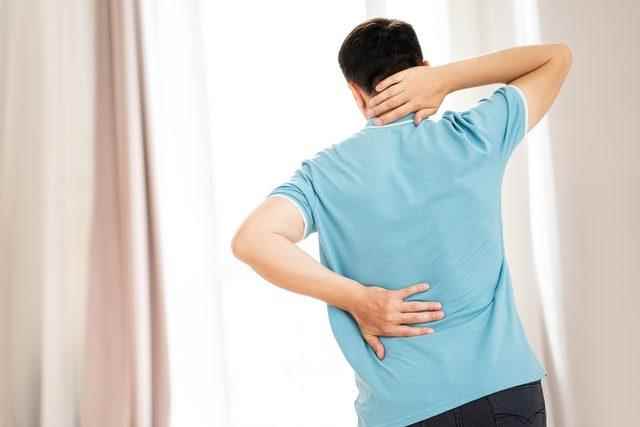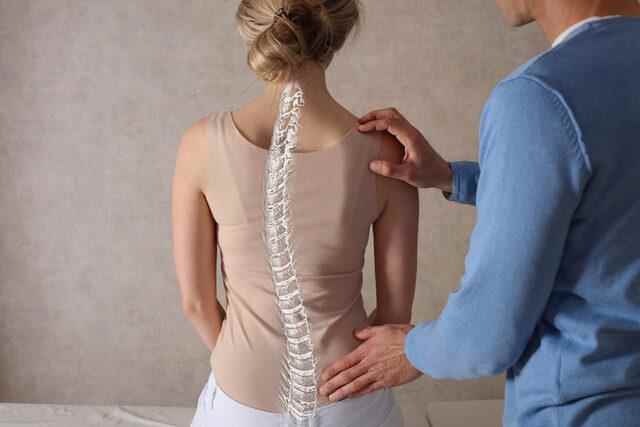Acıbadem Maslak Hospital Spine Health Center, Orthopedics and Traumatology Specialist Prof. Dr. Ahmet Alanay stated that adult scoliosis affects the quality of life as much as other chronic diseases. reveals that adult degenerative scoliosis is a new public health problem of our time, the frequency of which is increasing with the aging population.
6 MOST FREQUENTLY ASKED QUESTIONS ABOUT ADULT SCOLIOSIS!
prof. Dr. In his statement within the scope of June – Scoliosis Awareness Month, Ahmet Alanay answered the 6 most frequently asked questions about adult scoliosis, listed 4 mistakes to be avoided, and made important warnings and suggestions.
QUESTION: How do adult scoliosis and other spinal disorders occur?
ANSWER: Adult spinal disorders can be a continuation of diseases that occur in childhood and adolescence, or they can start in adulthood. Scoliosis that starts in adolescence but is not noticed at that time or is not treated even though it is noticed and whose symptoms progress is called ‘adult idiopathic scoliosis’. In this type of scoliosis, symptoms such as pain and poor posture appear over time. If adult degenerative (post-occurring) scoliosis; It occurs as a result of the deterioration of the spine structure and osteoporosis (bone loss) with aging. Studies; While the incidence of this type of scoliosis over the age of 60 is over 60 percent, Prof. Dr. Ahmet Alanay says that adult degenerative scoliosis is the new public health problem of our age.

QUESTION: What problems do adult scoliosis and spinal disorders cause?
ANSWER: In people with advanced scoliosis, when the spine and trunk lie to the side or forward, there may be restriction in mobility, back and low back pain, loss of strength in the muscles, numbness in the legs, cramps and shortened walking distance. Complaints may increase if the commonly known expression ‘lumbar slippage’, that is, the displacement of one vertebra forward, backward or sideways on the other is added to the table. In adult idiopathic scoliosis, there may be severe pain due to deterioration of the spine joints, while the thorax is compressed, fatigue and respiratory distress may be experienced. All these complaints seriously reduce the quality of life of patients.

QUESTION: How is the treatment method determined in adult scoliosis and spine disorders?
ANSWER: The patient’s complaints and the degree of curvature of the scoliosis determine the direction of the treatment. The doctor may order radiography, magnetic resonance imaging (MRI), computed tomography (CT), or electro-diagnostic tests by evaluating the patient’s complaints. The method to be chosen in the treatment of adult scoliosis is planned according to the degree of pain and curvature of the scoliosis, and whether the curvature is progressive or not. Generally, non-surgical treatment methods are applied to the patient first.

QUESTION: How effective are non-surgical treatments for adult scoliosis and spinal deformities?
ANSWER: Prof. Dr. Ahmet Alanay “For patients with adult scoliosis; Methods such as physical therapy and exercises, drugs and injections, corset treatment to be applied in the presence of a physiotherapist can be applied individually or together. Depending on the type of scoliosis and the physical condition of the person, doctors will choose a different and most suitable method for each patient. However, long-term use of corset treatment may cause more harm than good, and physical therapy and exercises may not be sufficient to prevent progressive scoliosis. says.

QUESTION: How effective is surgical treatment in adult scoliosis and spinal deformities?
ANSWER: Stating that the duration of surgery and the number of surgical procedures can be higher in adult scoliosis surgery, Prof. Dr. Ahmet Alanay says: “Surgical treatment can be more difficult, especially if the patient has diseases such as heart and lung, diabetes and osteoporosis. However, with good preparation of the patient and taking the necessary precautions, the results of surgical treatment can be extremely satisfactory.”
QUESTION: What is the current surgical approach in adult scoliosis and spinal deformities?
ANSWER: In scoliosis surgery, it is aimed to correct the curvature to provide balance, to fuse the vertebrae (fusion) and to eliminate nerve compression. prof. Dr. Ahmet Alanay “Minimally invasive surgeries are generally the first choice for adult scoliosis and spinal deformities. We aim to provide maximum benefit with minimal intervention. However, in some cases, more aggressive surgeries such as fusion may be required. In fusion surgeries using screws and rods, planning and providing the patient-specific shape of the normal waist and back curves of the spine are very important. Otherwise, new surgeries may be required.” says. Stating that they provide the ideal spine lateral shape with personal analysis and simulations made on the computer for such surgeries, Prof. Dr. Ahmet Alanay said, “Thus, we minimize post-operative mechanical complications. Deformity analysis and general health status of the patient are effective in deciding how aggressive the surgery will be. Today, we are trying to choose the most appropriate surgical method for the patient with risk calculators created using artificial intelligence. The patient, who underwent the post-operative recovery and rehabilitation process, is discharged 7-10 days later. It is aimed to return the patient to his normal life as soon as possible with exercise and regular controls.
